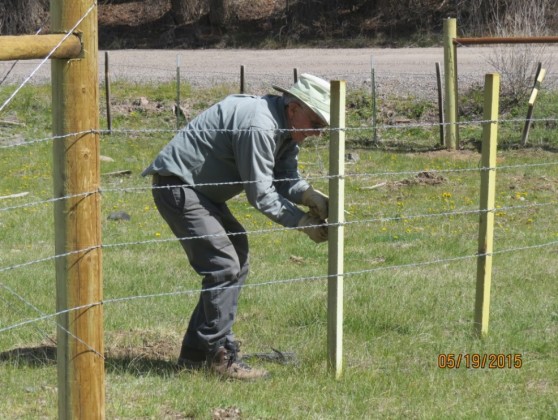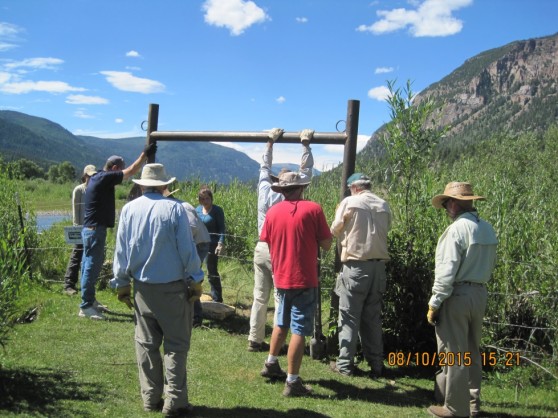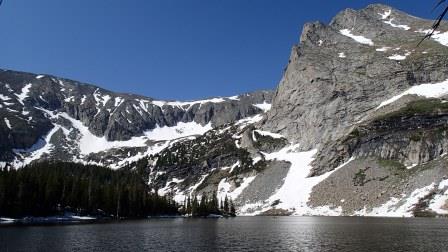On August 5th, 2015, the Gold King mine near Silverton unleashed 3 million gallons of mine wastewater into the upper Animas River. Within hours, the plume had traveled downstream to Durango – right in the middle of a busy summer in a tourism-based town. The striking pictures of the orange plume spread across the globe in minutes. The media coverage was massive and the world took note. Lost among the “Orange River” pictures, the apocalyptic commentary with words like disaster, catastrophic, etc., and the hyperbolic ventilating about the impact to the fishery has been the good news: the Animas River has weathered the spill and the fishery through the Town of Durango is doing well.
 If you didn’t know to look for very faint traces of iron residue, you wouldn’t even know we had this insulting event in early August. The Animas is back to its usual state of water quality. As to the fishery, there has been no fish mortality documented from the spill, while bug sampling by an aquatic biologist with Mountain Studies Institute indicates a still thriving population of mayfly nymphs and caddis pupa. Colorado Parks and Wildlife (CPW) had installed pens of fingerling trout in the Animas before the plume arrived – a canary in a coal mine, if you will. None of those fish died either. In the past few weeks we have seen Baetis, midges and Tricos coming off. CPW ran an electro-shocking episode after the “Spill” with the usual re-capture protocol and got essentially the same results as the year before. Actually, the survey showed a slight improvement.
If you didn’t know to look for very faint traces of iron residue, you wouldn’t even know we had this insulting event in early August. The Animas is back to its usual state of water quality. As to the fishery, there has been no fish mortality documented from the spill, while bug sampling by an aquatic biologist with Mountain Studies Institute indicates a still thriving population of mayfly nymphs and caddis pupa. Colorado Parks and Wildlife (CPW) had installed pens of fingerling trout in the Animas before the plume arrived – a canary in a coal mine, if you will. None of those fish died either. In the past few weeks we have seen Baetis, midges and Tricos coming off. CPW ran an electro-shocking episode after the “Spill” with the usual re-capture protocol and got essentially the same results as the year before. Actually, the survey showed a slight improvement.
 While long-term effects of the spill are yet unknown, anglers, local fly shops and outfitters are breathing a sigh of relief that one of America’s great trout rivers has survived this ugly onslaught.
While long-term effects of the spill are yet unknown, anglers, local fly shops and outfitters are breathing a sigh of relief that one of America’s great trout rivers has survived this ugly onslaught.
This is not to diminish our concern for the Animas River and the fishery in the canyon below Silverton. This reach has been substantially impacted by three draining mines at the headwaters of Cement Creek, which flows into the Animas at Silverton. This, plus the recent “Spill”, highlights the very need for Good Samaritan Legislation for which TU is strongly advocating – so that abandoned mine cleanup projects can proceed here and elsewhere.
The bottom line is Durango is still a great place to visit and to be your base for fly-fishing outings.
- Buck Skillen, President, Five Rivers Chapter TU
The latest fishing report/forecast from Duranglers:
Except for some rain events the Animas has been fishing very well with solid Trico and midge hatches. Streamers have been effective as well. The Dolores River below McPhee Reservoir has suffered due to low flows the last few years but, with this past good water year, has been fishing much better. With forecasts for a good snowpack we are optimistic for the rebound to continue. Our high mountain streams will continue to fish for a bit but winter will come soon to the high country. The Piedra River and its tributaries are great options in the fall. The San Juan River below Navajo Dam has been fishing great this year. From now until at least Thanksgiving expect great midge and BWO hatches with some good dry fly fishing on the right day. And of course the San Juan is one of the best winter trout fisheries anywhere.






 experiences to better implant them in my brain.”
experiences to better implant them in my brain.”













